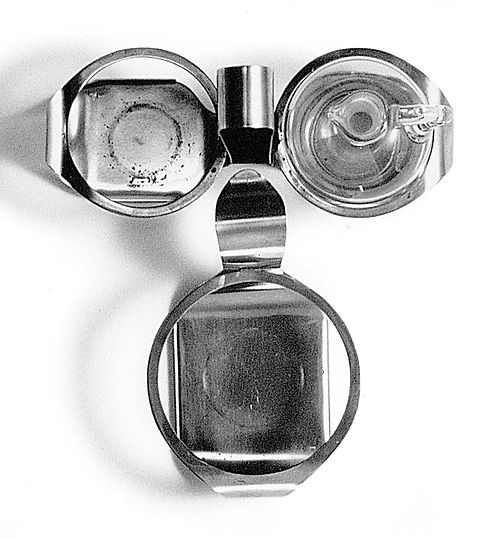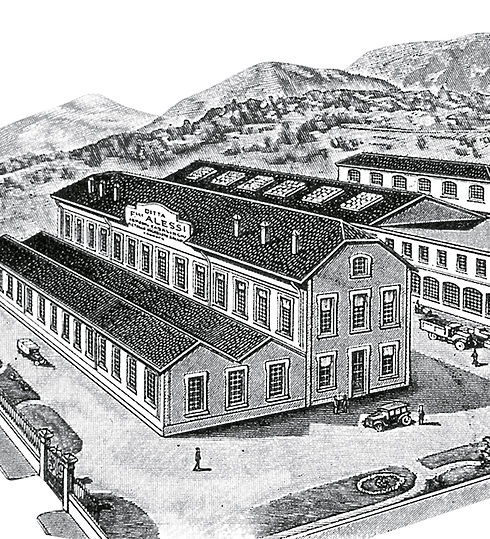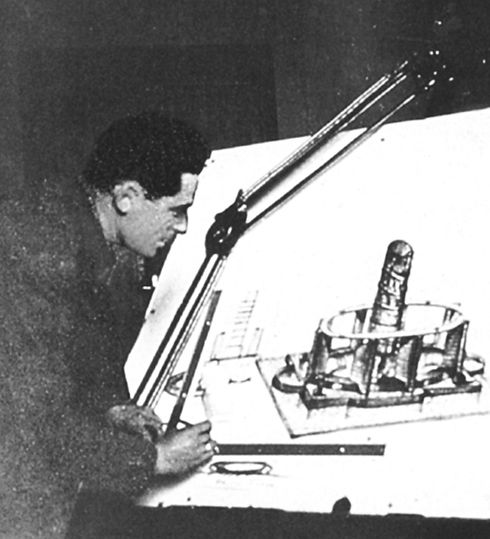历史
始建于1921年的意大利设计工厂
探索Alessi的历史和起源,并发现其与最有趣的设计师的合作伙伴关系是如何形成的。


1920 -
起点
1921年,乔瓦尼·阿莱西(Giovanni Alessi)和他的兄弟创立了“用于铸造黄铜和镍银板的车间-Fratelli Alessi Omegna-FAO。粮农组织第一批产品的灵感来自于20世纪初期最负盛名的产品制造商。乔凡尼(Giovanni)着迷于高质量和精湛的工艺:在原材料铜、黄铜和镍银制成的产品表面再镀镍、铬或银,这些产品以其细致的工艺和完美的外观而闻名。
1930 -
Carlo Alessi
1932年,乔万尼(Giovanni)的长子卡洛·阿莱西(Carlo Alessi)加入了家族企业,设计了30年代中期至1945年之间企业制造的大多数产品。企业在30年代加速发展,制造部门的员工人数增加,有了初始的销售布局。第一批原创的,具有独立创意的产品开始在 Carlo的努力下开始生产。到本世纪末,由于政治原因,企业的高速发展减缓了。


1940 -
战争
由于第二次世界大战爆发,弗拉特利·阿莱西·奥梅尼亚(Fratelli Alessi Omegna)需要将原本的生产线用于武器工业。战争结束后,粮农组织又恢复了正常,这为接下来的转��变奠定了基础,公司从手工业生产规模向工业化生产转变。此外,它还使产品形象变得更加鲜明,与该领域领先的公司进行竞争,并逐渐渗透到新兴的意大利设计界。
1950 -
Ettore Alessi
该公司在20世纪50年代逐渐放弃使用软金属而开始用不锈钢,将生产从手工业转变为工业生产。名称改为:ALFRA(ALessi FRAtelli)。在这些年中,该公司专门生产用于特定场所的产品(例如,用于酒店,饭店,酒吧等)。创始人的长子卡洛·阿莱西(Carlo Alessi)从父亲手中接管公司。他的兄弟埃托尔(Ettore)也于1945年加入,成为工程部负责人,开始用钢丝制成篮子和水果盘。在他的带领下,ALFRA也开始与独立设计师合作。


1960 -
Ceselleria Alessi
在1960年代,设计了一系列供家庭使用的产品。“ Ceselleria Alessi”系列重新诠释传统银器的风格,这非常符合当时的潮流,很快就成为了畅销产品。在国际市场爆炸式增长时,新的抛光和缎面精钢产品的高品质工艺也让这家意大利公司取得了成功。在1964年,该奖项被授予了著名的“工业Mercurio d'Oro奖”,击败�了100多家竞争对手的公司,并成为该行业中最具创造力和进取心的公司之一,赢得了好的声誉。
1970 -
第一批设计英雄
1970年,阿尔贝托·阿莱西-创始人的孙子加入。他的第一批设计是一组托盘和篮,Franco Sargiani和Ejia Helander以及Alessi d'Après设计的模块化餐桌服务系统。
Alessi d'Après是生产“艺术作品”的研究机构,其中涉及萨尔瓦多·达利(SalvadorDalì):阿尔贝托希望,生产不仅具备功能,且能够满足人们对艺术的需求。
在上个世纪70年代,将公司转变为Alberto想象的设计工厂。


1980 -
茶和咖啡广场
在80年代上半叶,与亚历山德罗·门迪尼的合作展开了“茶与咖啡广场”的活动,旨在探索国际建筑界中应用建筑设计语言的人才。“茶与咖啡广场”的研究发表于1983年,在公众和评论家中均获得了巨大成功,这使Alessi牢牢地跻身于意大利设计工厂之列。这次活动还使得两位新设计师阿尔多·罗西(Aldo Rossi)和迈克尔·格雷夫斯(Michael Graves)开始有名气。
1990 -
年轻设计师与新材料
Centro Studi Alessi(CSA)于90年代初开业,其使命是:为物品相关的事物提供理论上的贡献,并希望与年轻设计师开展工作。
Alessi的研究为新的设计语言打开了大门,创造了当时的标志性产品,例如Guido Venturini的Firebird打火机或Stefano Giovannoni的Mary Biscuit容器。当时,几乎只使用了其他材料和钢一起投入生产。里面有木材,塑料,玻璃,瓷器,陶瓷等制成的物品。


2000 -
茶楼和咖啡塔
茶和咖啡塔的设计运营于20年代开始,遵循着茶和咖啡的假想。建筑师当时提出的主题是“茶具”,将大规模生产转变为较小的规模。
该部门建立了一系列新的合作,其中包括与David Chipperfield,Doriana和Massimiliano Fuksas,Zaha Hadid和Toyo Ito的合作,使Alessi的折衷主义理念发展完善。Alessandro Mendini指出:“以前的所有理论,都有了进一步的诠释和发展。”
2010 -
道德与激进
“道德”,被看成是倾向简洁性和朴素的设计。“激进”表示正在寻找具有强烈表现力和装饰性的形式。尽管语言种类繁多,但仍可按照二分法来欣赏带有“激进”烙印的设计和具有道德倾向的设计(例如,深泽直人(Naoto Fukasawa)或大卫·奇珀菲尔德(David Chipperfield)。其实,“伦理”与“激进”之间的探索,是将设计中更为复杂的现实定义为艺术和诗意的创造学科的尝试。

2020 -